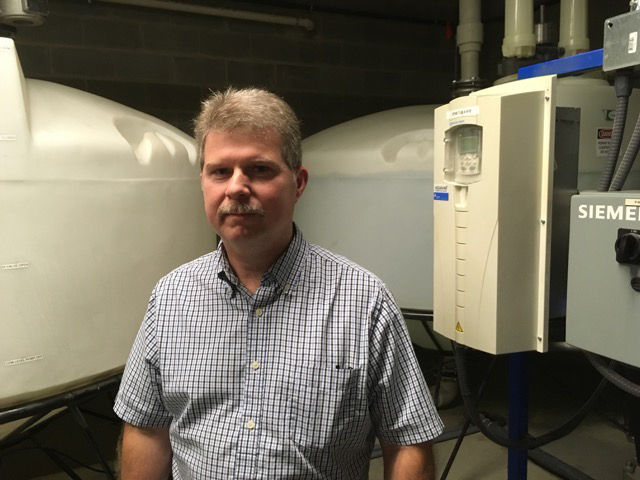Campus labs find ways to curb water use during drought
By Blaine Friedlander

Cornell’s laboratories have jumped into the water-saving pool, as building managers and campus wet lab technicians respond to the drought.
“As we’ve been seeing all over campus for the past two months, every little bit of water saved makes a lot of difference,” said Mark Howe, campus energy manager for Cornell’s Infrastructure Properties and Planning division. “It’s combining loads in lab washing machines when washing glasses or putting equipment into the autoclave or not leaving water running. We’re on the lookout – in all the research laboratories that require water – for possible reductions in water use.”
Cornell issued water-use restrictions July 28 and currently remains in a second-stage drought. Throughout campus, building and lab managers share ideas on saving water.
Todd Pfeiffer, facilities director for Weill Hall, Clark Hall and the Physical Sciences Building, said Weill Hall is a big water consumer among the research buildings due to its large number of wet labs and plant growth facilities, and it had typically used about 30,000 gallons a day. However, this water usage is down about 5,000 gallons per day since early August due to conservation efforts. Clark Hall and the Physical Sciences Building typically use less than 5,000 gallons a day in comparison.
Not all water is equal. In Weill Hall, four kinds of water are used in laboratories: potable, softened, reverse osmosis (RO) and reverse osmosis deionized (RODI). The building is equipped to produce specialized water for individual laboratory and washing needs.
It takes about four gallons of tap water to create one gallon of RODI water, so conserving that type of water is the highest priority. Fortunately, Weill Hall is equipped with a special system to capture the remaining gallons of waste water from processing the RODI for use washing hands, flushing toilets and other non-research uses.
At the Weill Institute for Cell and Molecular Biology, comprising 12 large labs in Weill Hall, the group has a dedicated wash facility for glassware and to sterilize lab equipment such as glass-tube pipettes, which cannot be washed in the standard glassware washing machines.

Pfeiffer gives credit to lab technician Nadia Nikulin ’14, at the Weill Institute, who generated substantial rinsing protocol savings, based on ideas from Sarah T. Griffin, a lab technician also at the institute. To ensure there are no impurities, laboratory protocol calls for cleaning glassware and pipettes by soaking them in a detergent solution. This step is followed by hours of rinsing in potable water, then further rinsing in RODI water for several more hours. The rinsing protocol has been reduced by several hours in each step, saving thousands of gallons per week.
“Nadia experimented and confirmed that the new procedures she developed are still effective and appropriate,” said Pfeiffer. “That was probably Weill Hall’s biggest home run. Nadia was willing to see if she could achieve the same results by using less water. And she did.”
Media Contact
Get Cornell news delivered right to your inbox.
Subscribe